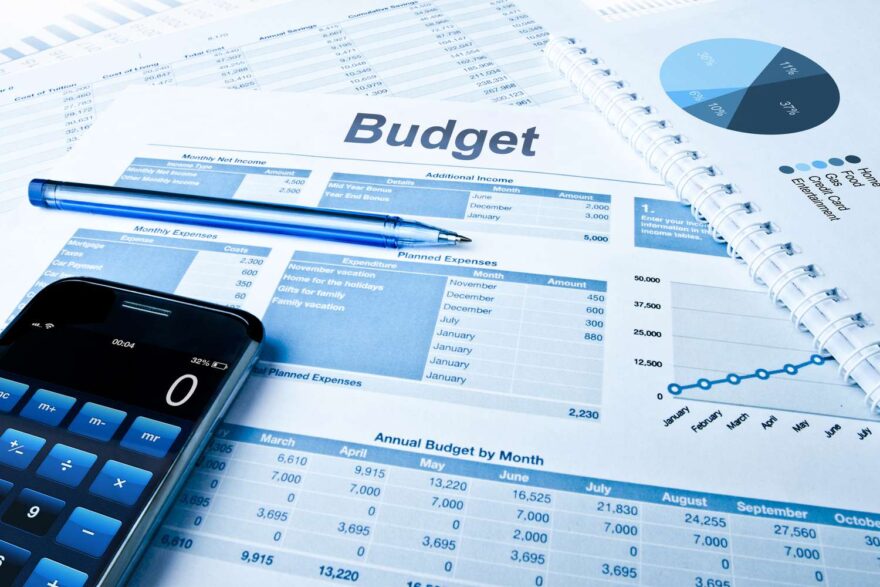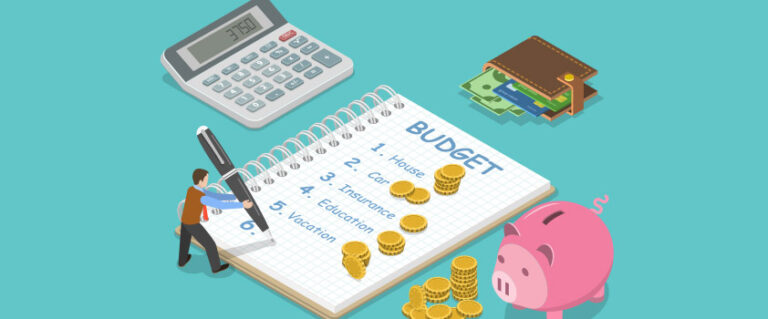Budgeting is a critical aspect of personal finance management.
It helps you control your spending, save more, and achieve your financial goals.
Sticking to a budget ensures financial stability and peace of mind.
Let us guide you through this process.
Step 1: Calculate Your Net Income

Your net income is the amount of money you take home after taxes and other deductions. It’s different from your gross income, which is your total earnings before deductions.
Knowing your net income is crucial because it represents the actual amount you have available to spend.
For freelancers and self-employed individuals, calculating net income can be more complex due to irregular income and additional tax considerations. It’s essential to account for all sources of income and subtract any business expenses and taxes to determine your true take-home pay.
Step 2: Track Your Spending

Tracking your spending involves categorizing your expenses into fixed and variable costs. Fixed expenses, like rent and utilities, remain constant each month, while variable expenses, such as groceries and entertainment, can fluctuate.
There are various methods to track spending, including apps, spreadsheets, and reviewing bank statements. Identifying spending patterns is essential to understand where your money is going and to highlight areas where you can cut back.
Step 3: Set Realistic Goals
Setting realistic financial goals is key to successful budgeting. Short-term goals might include saving for a vacation or paying off a small debt, while long-term goals could involve buying a house or saving for retirement.
Aligning your budget with your personal goals helps you stay motivated and focused. By setting clear and realistic goals, you create a roadmap for your financial journey and can measure your progress over time.
It’s important to ensure that your goals are achievable within your financial constraints. While this may seem like an easy thing to do, it must be said that this is not always the case. If you want to expand on this subject, you should read more on it.
Step 4: Make a Plan

Creating a budget plan involves comparing your income with your expenses. Start by listing all your sources of income and then itemize your expenses. Prioritize your spending by distinguishing between needs and wants.
Needs are essential expenses like housing and food, while wants are non-essential items like dining out and entertainment.
Set specific spending limits for each category to prevent overspending. A monthly budget helps you allocate your resources effectively and ensures that you have enough money for both necessary expenses and savings.
Step 5: Adjust Your Spending
Adjusting your spending is crucial to maintaining a balanced budget. Identify areas where you can cut back, such as dining out less frequently or canceling unused subscriptions. Strategies for reducing variable expenses include cooking at home, using public transportation, and shopping during sales.
Consider adjusting fixed expenses if possible, like refinancing a loan or negotiating lower rent. Making these adjustments helps you stay within your budget and frees up money for savings or other financial goals.
Regularly reviewing and adjusting your spending ensures that your budget remains effective and aligned with your financial situation.
Step 6: Review Your Budget Regularly
Regular budget reviews are essential to keep your financial plan on track. Changes in income or expenses can impact your budget, so it’s important to adjust accordingly. Reviewing your budget monthly helps you identify any discrepancies and make necessary changes. Staying motivated can be challenging, but setting reminders and celebrating small successes can help. Regular reviews ensure that your budget adapts to your evolving financial circumstances and keeps you focused on your goals.
Additional Tips for Sticking to Your Budget

Sticking to a budget can be challenging, but with the right strategies, it becomes much easier. Here are some additional tips to help you stay on track:
Keep Your Saving Goals in Mind
Staying motivated is crucial for successful budgeting. One effective way to maintain motivation is to visualize the benefits of achieving your financial goals.
Whether it’s saving for a vacation, buying a house, or building an emergency fund, keeping these goals in the forefront of your mind can provide the incentive you need to stick to your budget. Regularly remind yourself of what you are working towards and celebrate small milestones along the way.
Set Up Auto Draft Payments
Automating bill payments and savings can significantly reduce the temptation to spend money impulsively. By setting up automatic transfers, you ensure that your bills are paid on time and that you are consistently contributing to your savings.
This method not only helps you avoid late fees but also instills discipline in your financial habits. Automation simplifies your financial management and keeps you on track without requiring constant manual intervention.
Take a Step Back Before Making Impulse Purchases
Impulse purchases can quickly derail a budget. To avoid this, implement a waiting period for non-essential purchases. For example, wait 24 hours before buying an item.
This cooling-off period gives you time to reconsider and often leads to realizing that the purchase is unnecessary. By practicing delayed gratification, you can reduce impulsive spending and make more thoughtful decisions about your finances.
Watch Out for the Small Stuff
Small, recurring expenses can add up and strain your budget. Monitor these costs, such as daily coffee runs or subscription services, and identify areas where you can cut back.
Consider brewing coffee at home or canceling subscriptions you no longer use. These small changes can result in significant savings over time and free up money for more important expenses or savings.
Use a Budgeting App
Budgeting apps are powerful tools that simplify tracking and managing your budget. They offer features like expense categorization, goal setting, and spending alerts. Popular budgeting apps include Mint, YNAB (You Need a Budget), and PocketGuard.
These apps provide a comprehensive view of your finances, making it easier to stay organized and adhere to your budget. They also offer insights and recommendations to help you optimize your financial plan.
The Bottom Line
By following these steps, you can create and stick to a budget that aligns with your financial goals. Start today and take control of your finances for a more secure future.
Related Posts:
- 20 Best Gaming Headset Under 50$ 2024 - for PC, PS4,…
- How Long Should a Jump Rope Be | How to Measure +…
- Top 10 Best Scrubs For Women 2024 - Pants for Nurses…
- Top 10 Best Office Chair Under 200 2024 - Ergonomic…
- Top 10 Best Dog Nail Grinder 2024 - Best Care for Your Pet
- Top 10 Best Modem For Gaming 2024 - For Optimum Gaming Speed







